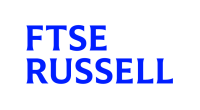Investment Outlook 2022 – Part 2
The Times They Are a-Changin'
A round of central bank policy moves started with a more hawkish Fed, who gave notice of an early cessation of its bond buying programme, while their ‘Dot Plot’ chart suggests a total of three U.S. rate hikes in 2022. This was quickly followed by the Bank of England’s first interest rate increase in three years and the news that the ECB would begin to taper its asset purchase programme. With inflation at its highest level in decades, and no significant retreat from these levels likely in the short term, central banks are being forced into policy responses despite the potential economic uncertainty that accompanies the Omicron variant of the coronavirus.
Many commentators are thinking that 2022 will be a year of transition; changing conditions in the progression towards normalisation present both risks and opportunities for investors across the gamut of asset classes. We’ve included a bumper selection of outlook papers this time, assessing the prospects for major asset classes and offering a range of opinions on ‘What’s Hot’ and ‘What’s Not’ in 2022.

2022 Outlook: Slower. But still pretty fast (Nuveen, Dec 2021)
Nuveen suggests that 2022 is likely to look a lot like 2021, albeit with some important variations. They think we haven’t yet reached the end of the economic cycle, but circumstances are going to be more difficult, and returns harder to obtain. That said, opportunities exist across most asset classes.
2022 Investment Outlook Hub (Wellington Management, Nov 2021)
Wellington Management presents their investment outlook 'Hub' in which they include all seven of their 2022 outlook papers, covering the main asset classes and the economy. Other papers look at climate change and ESG, and sustainable investing ideas.
2022 Outlook: A transition year (Northern Trust AM, Dec 2021)
A common theme for outlook papers is that 2022 will be a year in transition, for central bank policy, inflation, and pandemic responses. Northern Trust AM outlines ways in which portfolios might be best positioned to take advantage of these changing circumstances.
2022 Outlook: Gathering pace (LGIM, Dec 2021)
For compliance reasons, this paper is NOT accessible in the United States and Canada
LGIM are suggesting that 2022 could be a turning point for investors. Central bank policies change tack from being arguably too accommodative, to ones in which stimulus packages, which have provided a supportive backdrop for asset markets, are withdrawn.
2022 Investment Outlook – Investing in the Great Transformation (Amundi)
For compliance reasons, this paper is NOT accessible in the United States
Amundi believes 2022 could be a pivotal year as investors grapple with a changing economic environment, as central banks switch focus to the control of inflation and resources begin to be focused more intently on the energy transition. Calls for a more inclusive growth model are expected to become louder too.
2022 Insurance Investment Outlook (PineBridge Investments, Nov 2021)
PIneBridge Investments notes that in 2022 nothing much is likely to change for the insurance industry which faces many of the challenges that were apparent in 2021. Regulatory pressure, low yield assets, and continuing fee pressure continue unabated, with M&A-induced economies of scale and external injections of cash being seen as possible solutions.
2022 Outlook for Real Estate: Five themes (Nuveen, Dec 2021)
In their Real Estate outlook, Nuveen identifies five key themes they think investors need to be considering in 2022.
Investment Outlooks: The next series (Invesco, 2021)
For compliance reasons, this paper is only accessible in certain geographies
In this investment outlook 'Hub', Invesco notes several challenges across markets that await investors in 2022. However, they seek to turn potential obstacles into opportunities which may help future-proof portfolios.
Webinar: 2022 Global Market Outlook (T. Rowe Price, Dec 2021)
For compliance reasons, this paper is only accessible in certain geographies
In this webinar, experts from T. Rowe Price discuss four investment themes they think will influence markets in the coming year. They also outline several of the key risks and opportunities they think investors should be aware of in 2022.
Investment Strategy Outlook 2022 (Axa IM)
This outlook paper from Axa IM outlines their thinking that Covid-19 will remain an issue for markets in 2022. They believe inflation will stay ‘higher for longer’ and that rate increases from central banks will be required. They suggest that, provided equity earnings keep growing, markets should be able to cope with modest rate rises.
Economic Outlook (OECD, Dec 2021)
The most recent outlook paper from the OECD highlights strong policy support for the global economy and how vaccinations have also helped spur an economic rebound for many countries. They point to continuing supply chain issues and sustained inflation as potential threats.
Market Views – 06 Dec 2021 (Blackstone)
Blackstone’s Joe Zidle, Chief Investment Strategist, Private Wealth Solutions, offers another in his series of occasional market views commentaries.
2022: Investment views for uncertain times (Candriam)
The Outlook Calendar from Candriam highlights a particular theme each week, in which they outline their views for the coming year across topics as diverse as thematic investing, a macro economic outlook, and impact investing.
Podcast: 2022 Outlook – Opportunities and challenges (State Street, Dec 2021)
In this podcast from State Street, their experts offer insights into what a post-pandemic world might look like and how the path towards fiscal and monetary normalisation might evolve, and what its impact on both developed and emerging markets is likely to be.
Economic and Market Outlook 2022 (Mercer)
Mercer’s outlook piece forecasts continuing economic recovery in 2022, despite ongoing supply chain concerns, high energy prices, and slower economic growth in China.
Catch 2022 Outlook: Unravelling the policy paradox (Fidelity International)
For 2022, Fidelity expects a few key decisions from policymakers, the most important of which will be how to increase rates sufficiently to curtail the worst effects of inflation, without derailing the global economic recovery.




